

Lady with an Ermine. Lady with an Ermine is a painting by Leonardo da Vinci from around 1489–1490.
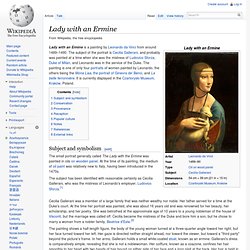
The subject of the portrait is Cecilia Gallerani, and probably was painted at a time when she was the mistress of Ludovico Sforza, Duke of Milan, and Leonardo was in the service of the Duke. The painting is one of only four portraits of women painted by Leonardo, the others being the Mona Lisa, the portrait of Ginevra de' Benci, and La belle ferronnière. It is currently displayed in the Czartoryski Museum, Kraków, Poland. Subject and symbolism[edit] Arnolfini Portrait. The Arnolfini Portrait is an oil painting on oak panel dated 1434 by the Early Netherlandish painter Jan van Eyck.
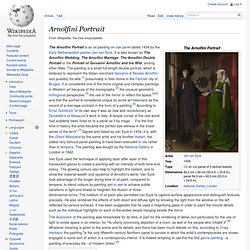
It is also known as The Arnolfini Wedding, The Arnolfini Marriage, The Arnolfini Double Portrait or the Portrait of Giovanni Arnolfini and his Wife, among other titles. The painting is a small full-length double portrait, which is believed to represent the Italian merchant Giovanni di Nicolao Arnolfini and possibly his wife,[1] presumably in their home in the Flemish city of Bruges. Mr and Mrs Andrews. Gainsborough's self-portrait of 1754 Mr and Mrs Andrews is an oil on canvas portrait of about 1750 by Thomas Gainsborough, now in the National Gallery, London.
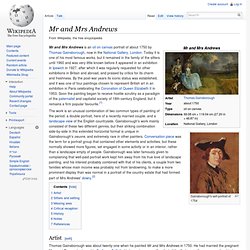
Today it is one of his most famous works, but it remained in the family of the sitters until 1960 and was very little known before it appeared in an exhibition in Ipswich in 1927, after which it was regularly requested for other exhibitions in Britain and abroad, and praised by critics for its charm and freshness. By the post-war years its iconic status was established, and it was one of four paintings chosen to represent British art in an exhibition in Paris celebrating the Coronation of Queen Elizabeth II in 1953. Soon the painting began to receive hostile scrutiny as a paradigm of the paternalist and capitalist society of 18th-century England, but it remains a firm popular favourite.[1] The Great Wave off Kanagawa. The Great Wave off Kanagawa (神奈川沖浪裏, Kanagawa-Oki Nami-Ura?
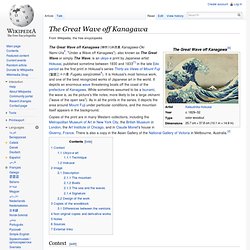
, "Under a Wave off Kanagawa"), also known as The Great Wave or simply The Wave, is an ukiyo-e print by Japanese artist Hokusai, published sometime between 1830 and 1833[1] in the late Edo period as the first print in Hokusai's series Thirty-six Views of Mount Fuji (富嶽三十六景, Fugaku sanjūrokkei?). It is Hokusai's most famous work, and one of the best recognized works of Japanese art in the world. The Blue Boy. The Blue Boy (c. 1770) is a full-length portrait in oil by Thomas Gainsborough, now in the Huntington Library, San Marino, California.[1] Perhaps Gainsborough's most famous work, it is thought to be a portrait of Jonathan Buttall (1752–1805), the son of a wealthy hardware merchant, although this has never been proven.
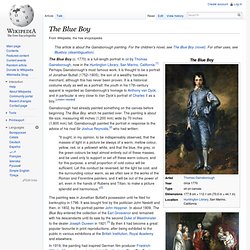
It is a historical costume study as well as a portrait: the youth in his 17th-century apparel is regarded as Gainsborough's homage to Anthony van Dyck, and in particular is very close to Van Dyck's portrait of Charles II as a boy. [citation needed] Gainsborough had already painted something on the canvas before beginning The Blue Boy, which he painted over. The painting is about life-size, measuring 48 inches (1,200 mm) wide by 70 inches (1,800 mm) tall.